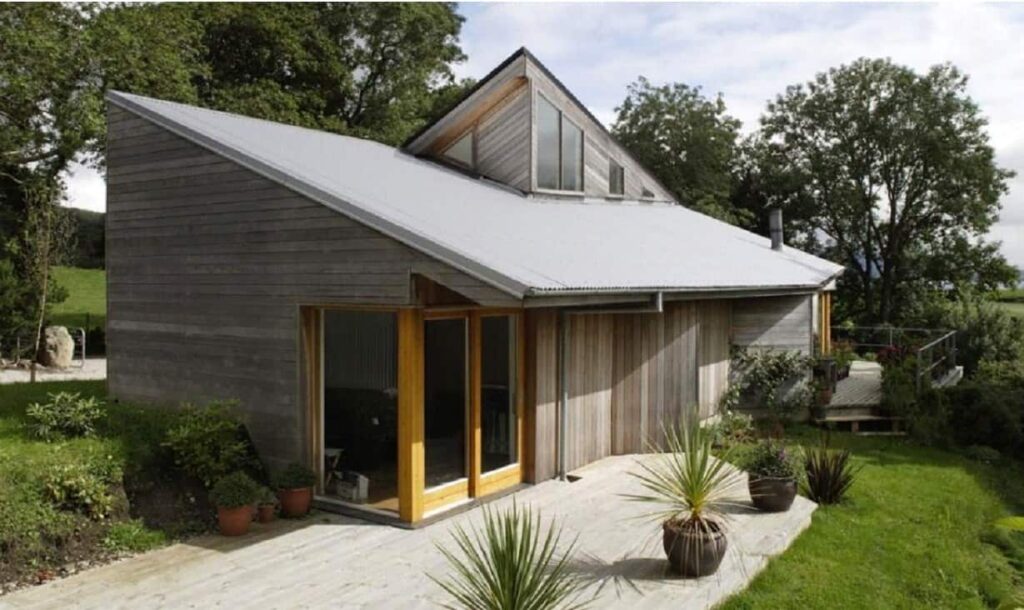
Net Zero Energy Building Solutions: Innovative Approaches for a Sustainable Future
In the quest for sustainability and environmental responsibility, net zero energy building solutions have emerged as a crucial focus for architects, builders, and homeowners alike. These solutions are not just about reducing energy consumption; they are about creating buildings that produce as much energy as they consume, paving the way for a sustainable future. By incorporating cutting-edge designs and technologies, these buildings aim to harmonize with the environment, reducing carbon footprints and enhancing energy efficiency.

What Are Net Zero Energy Buildings?
Net zero energy buildings are structures that generate as much energy as they use, typically through renewable energy sources like solar panels. These buildings are designed with energy efficiency at their core, utilizing advanced materials and technologies to minimize energy consumption. The goal is to balance energy production and consumption, achieving net-zero energy use over a typical year.
Key Features of Net Zero Energy Building Solutions
1. Energy-Efficient Design
The design of net zero energy buildings focuses on maximizing natural light, optimizing insulation, and reducing heat loss. This involves strategic placement of windows, use of energy-efficient appliances, and implementation of smart technology to monitor and control energy use.
2. Renewable Energy Sources
To achieve net zero energy, buildings typically integrate renewable energy technologies such as solar panels, wind turbines, and geothermal systems. These systems are designed to provide a reliable source of energy that can offset the building’s energy consumption.
3. Sustainable Materials
Choosing the right building materials is crucial for net zero energy solutions. Materials that are durable, recyclable, and sourced sustainably contribute to the overall energy efficiency of the building. Examples include recycled steel, bamboo, and reclaimed wood.
Benefits of Net Zero Energy Buildings
1. Environmental Impact
One of the primary benefits of net zero buildings is their positive impact on the environment. By reducing reliance on fossil fuels and minimizing carbon emissions, these buildings help combat climate change and promote environmental stewardship.
2. Cost Savings
Although the initial investment in net zero energy solutions may be higher, the long-term savings on energy bills can be substantial. Over time, the reduced energy costs can offset the initial expenses, making these buildings a cost-effective option.
3. Enhanced Comfort and Health
With improved air quality, natural lighting, and consistent temperatures, net zero buildings offer enhanced comfort for occupants. These factors also contribute to better health outcomes, reducing the risk of respiratory issues and improving overall well-being.
Challenges in Implementing Net Zero Energy Solutions
1. Initial Costs
One of the main challenges is the higher upfront costs associated with net zero energy solutions. This includes the cost of advanced materials and renewable energy systems. However, the long-term savings and environmental benefits often outweigh these initial expenses.
2. Technological Limitations
While technology is rapidly advancing, there are still limitations in the efficiency and affordability of some renewable energy systems. Ongoing research and development are crucial to overcome these barriers and make net zero buildings more accessible.
Case Studies: Successful Net Zero Energy Buildings
Several successful case studies highlight the potential of net zero energy solutions. For instance, The Edge in Amsterdam is known for its innovative energy management systems and smart building technologies. Additionally, the Bullitt Center in Seattle stands as a testament to the feasibility of sustainable urban development. For more inspiration, check out these housing success stories.
Future of Net Zero Energy Buildings
The future of net zero energy building solutions is promising, with continuous advancements in technology and growing awareness of environmental issues. As more people and organizations commit to sustainable practices, the demand for these solutions will likely increase, driving further innovation and adoption.
How to Start Your Net Zero Energy Journey
1. Conduct an Energy Audit
Begin by understanding your current energy usage through a comprehensive energy audit. This will help identify areas where energy efficiency can be improved.
2. Invest in Renewable Energy
Consider installing solar panels or other renewable energy systems to offset your energy consumption. These investments can significantly reduce your carbon footprint and energy costs.
3. Upgrade to Energy-Efficient Appliances
Replacing old appliances with energy-efficient models can drastically reduce your home’s energy use. Look for appliances with high energy ratings to ensure maximum efficiency.
Conclusion
Net zero energy building solutions represent a significant step toward sustainable living and environmental responsibility. By embracing these solutions, we can create buildings that not only meet our energy needs but also contribute to a healthier planet. As technology continues to evolve, the possibilities for net zero energy buildings are endless, offering a brighter and more sustainable future for all.

FAQ
1. What is a net zero energy building?
A net zero energy building is a structure that produces as much energy as it consumes, typically through renewable energy sources.
2. How can I make my home a net zero energy building?
To make your home a net zero energy building, consider investing in renewable energy systems, improving insulation, and using energy-efficient appliances.
3. Are net zero energy buildings cost-effective?
Yes, while the initial costs may be higher, the long-term savings on energy bills make net zero energy buildings a cost-effective solution.
For more information on sustainable building practices, visit the Journal of Sustainable Building.
This article contains affiliate links. We may earn a commission at no extra cost to you.